Assam Baghjan oil well fire doused after five months. But for the thousands displaced, the disaster continues
Six months back, on May 27, the Baghjan-5 oil well started to leak gas and then caught fire on June 9. At least 9,000 villagers were evacuated and moved into relief camps. They are now returning home, their livelihoods wiped out. Compensation remains contentious.

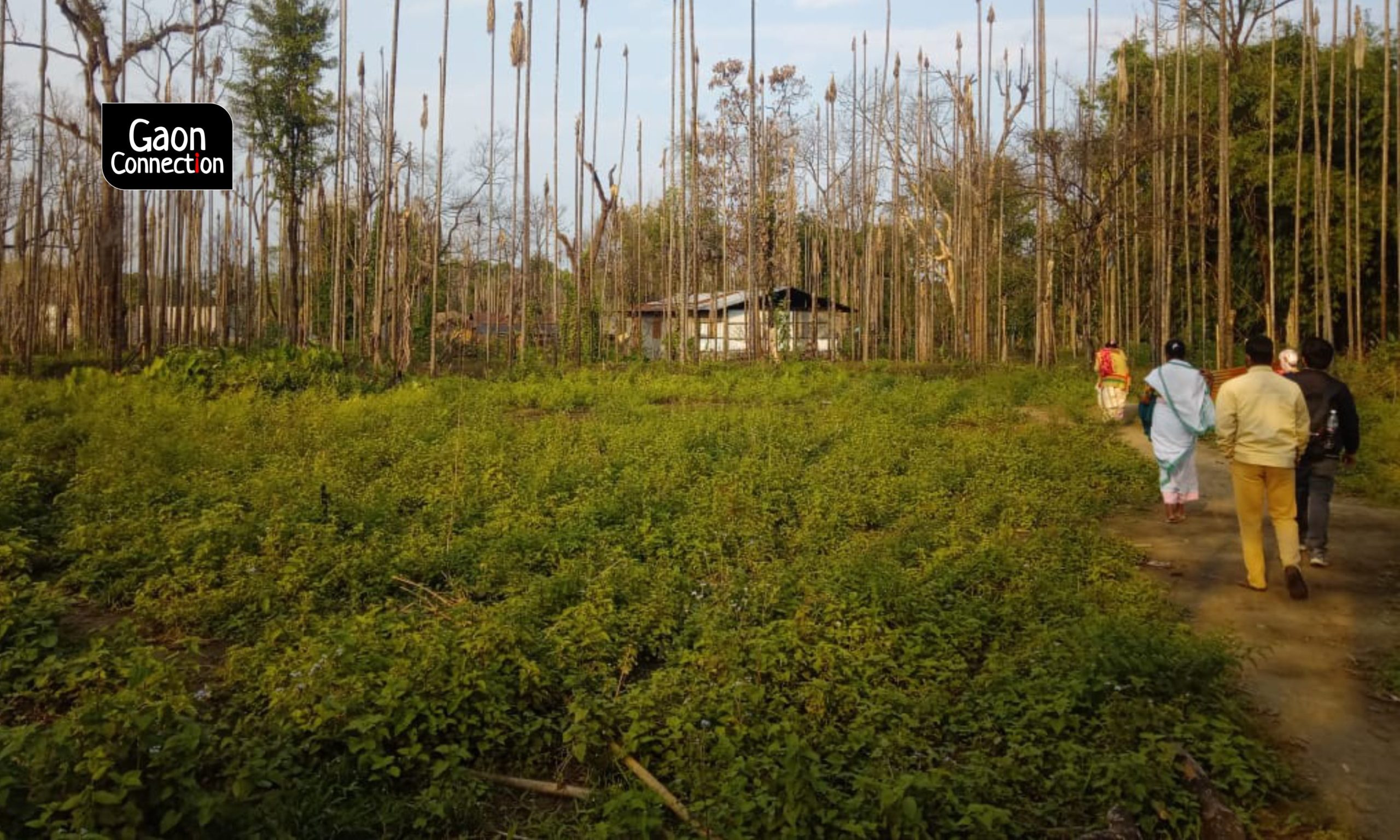
Baghjan village. Photo: Pratyush Deep Kotoky
Tinsukia, Assam
Kuntola Bora, has not been home for nearly six months. The 45-year-old, and a few other villagers of Baghjan, in Tinsukia district, Assam, are still not allowed to return to their homes and are living in rented temporary shelters in Tinsukia town.
This is because their village lies just a few metres away from the PSU Oil India Limited’s (OIL) Baghjan-5 oil and gas rig where there was a gas leak on May 27 this year followed by a huge explosion and fire on June 9.
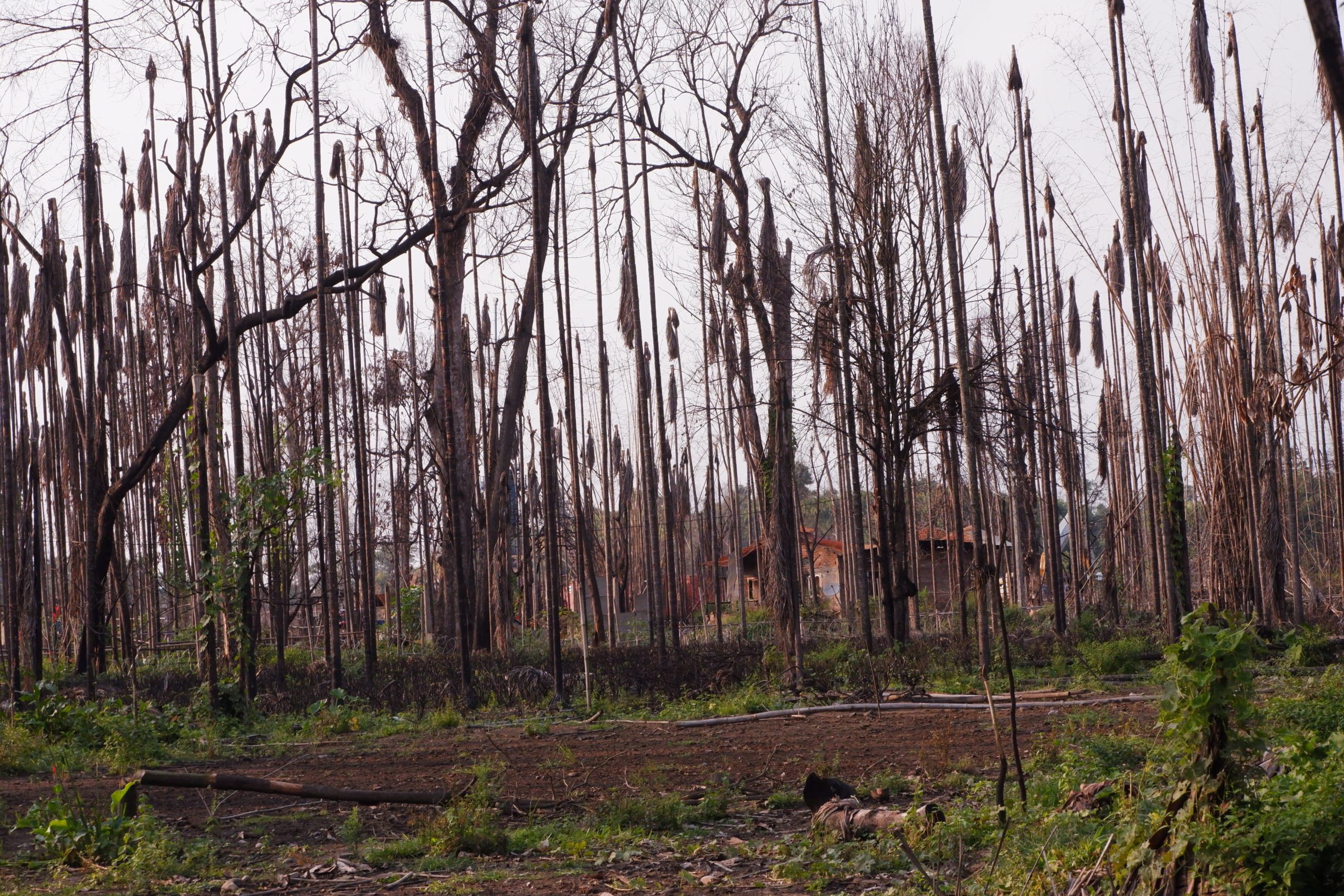
The fire burned for nearly six months and OIL only managed to douse the fire completely on November 15, after more than five months (159 days) of the disaster.
However, the disaster in Baghjan is far from over. Six months later, villagers like Kuntola are still displaced. They do not know when they will be able to return home. Apart from their houses, the disaster has also affected their farmlands, polluted their water bodies and wiped off their livelihoods.
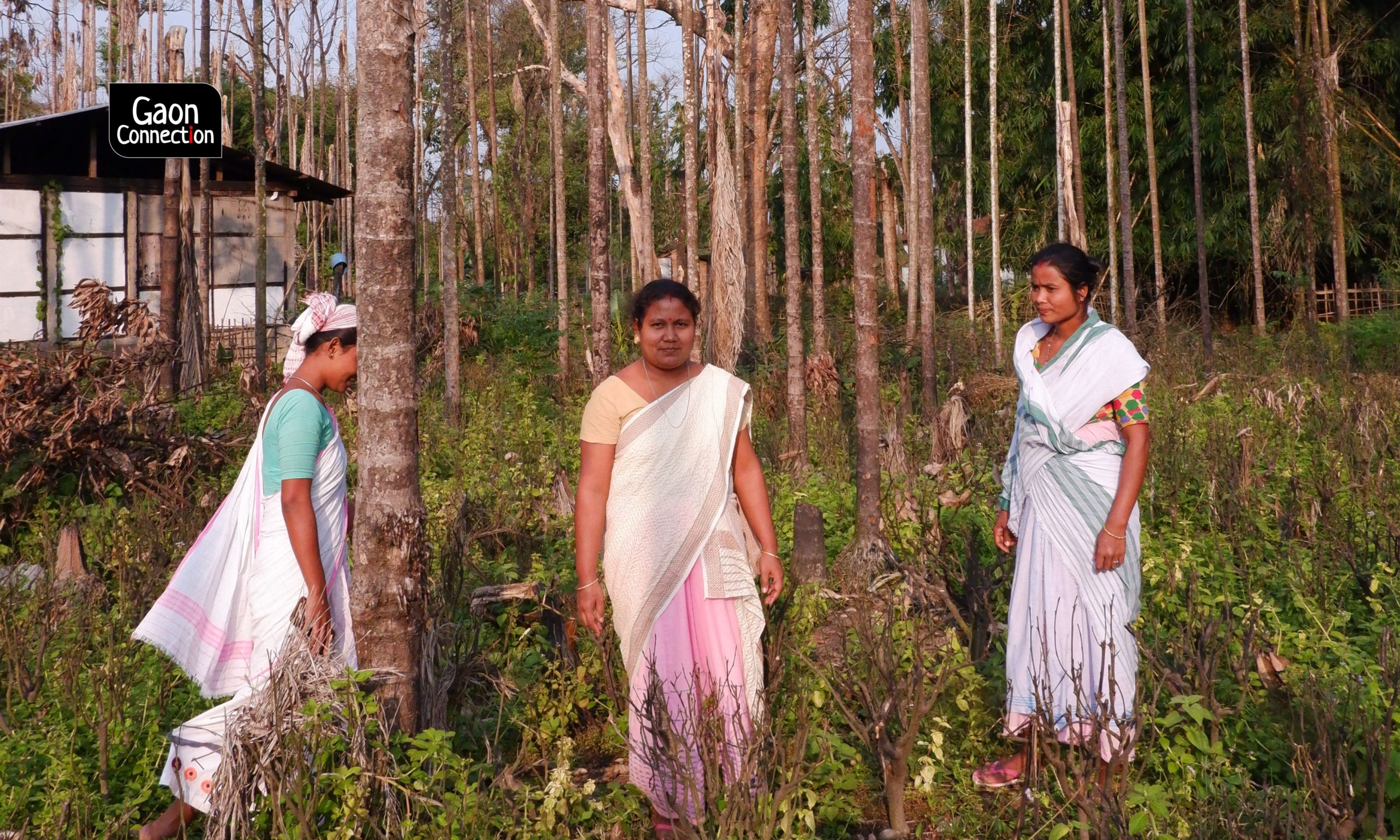
“We are left with nothing,” lamented Kuntola as she pointed to the betel nut trees in her compound, which were a source of her livelihood, that have withered in the explosion and fire. Her family also cultivates about a hectare of paddy, but that has gone too.
“Fishing and farming are the main sources of livelihood, and because of the blowout, people could not cultivate paddy this year. Those who grew vegetables too suffered a massive loss, as the entire crop was gutted,” Mahesh Hatibaruah, resident of Natun Gaon, one of the affected villages, located by the Maguri Motapung beel (wetland) told Gaon Connection. The village lies two kms from the blowout site.

It was the breeding season for fish when the blowout happened, he informed. The water bodies were covered with oil and most of the fishes of the beel died. “Working on the land will not be possible for a while and those in the village who rely on fishing in Maguri Motapung beel have suffered too as the condensate has killed fishes in the beel,” he added.
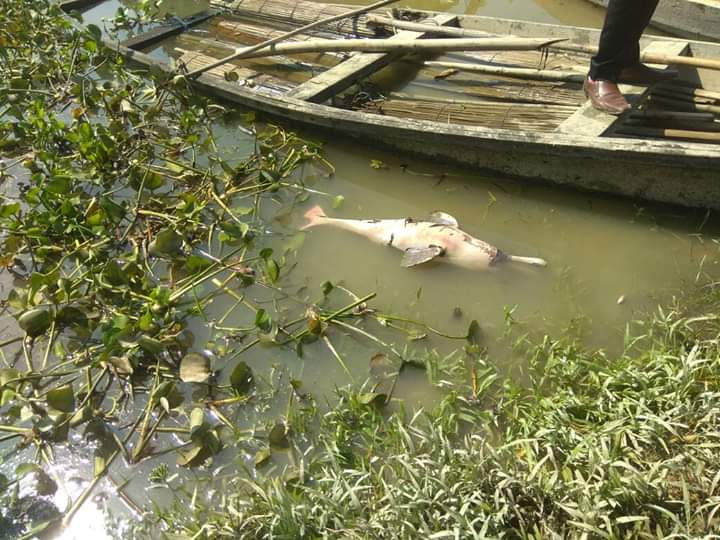
Displaced by disaster
Anima Bora, a resident of Baghjan village, where about 600 families live, clearly recalls what happened on May 27 when the Baghjan-5 oil and gas rig started to leak gas. “It was around ten in the morning and we were having our morning meal. Suddenly, we heard a loud hissing sound and the entire area was filled with smoke. It was so terrifying that everyone fled leaving everything behind,” she told Gaon Connection.
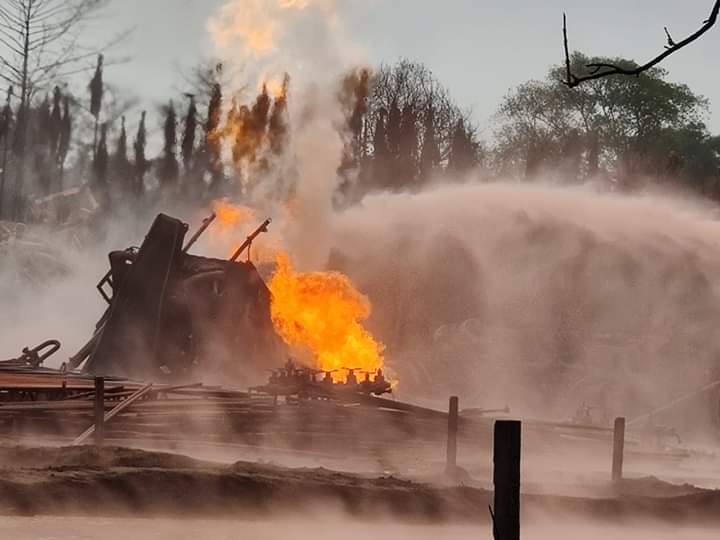
The same day, over 3,000 people of Baghjan village were moved to four relief camps set up by OIL in and around Tinsukia town, about 10 kms away. The number of shelters increased to 14 when the explosion of June 9 happened as 6,000 more people within a three kilometers radius of the blowout site were moved into them.
In all, 9,000 people from about a dozen villages within a three km radius of the rig were affected with 11 houses completely gutted in the fire following the explosion.
“The camp was in a high school. There were around 600 people in one camp. So, at least three-four families had to stay in one room,” Anima, who stayed in a relief camp near Baghjan Tini Ali told Gaon Connection.
Food, that was provided by OIL, was cooked by a collective committee formed by the villagers. There was overcrowding, said Anima, and the fear of the pandemic was at its peak, but OIL did provide them all with facemasks and COVID tests were also conducted at the camp, she informed.
For over four months, the 14 relief camps were home to 1,289 evacuated and displaced families. Towards the end of September and beginning of October, villagers were asked to return to their now-safe homes or move into rented accommodation. Those who could return to their villages, did, but about 50 families, including the eleven whose homes were completely gutted, moved into rented accommodation or to homes of relatives.
Relief and recompense
According to the villagers, when they moved out of the relief camps, a monthly compensation of Rs 50,000 was promised by OIL to all the displaced families of Baghjan and neighbouring villages as livelihood support, to pay their rents, etc.
“In September, OIL asked us to vacate the relief camps that were set up in the schools, as schools were about to restart. We were promised Rs 50,000 per month as compensation to take care of our rent and other expenses, when we moved out,” Rupam Moran, a Baghjan resident told Gaon Connection.
Moran and other villagers claimed they have received compensation for only the month of October and are yet to receive it for November. Predictably, they are worried. “Now, since the fire is doused, we heard they are not going to provide any more compensation, except for those whose homes were gutted in that fire,” said Moran, who is currently living in a rented accommodation with his family in Tinsukia town.
According to OIL about 1,289 families were given the monthly compensation of Rs 50,000, that for now has been paid out for only the month of October. A one-time compensation of Rs 30,000 was also sanctioned to the affected villagers by OIL, which the company claims to have paid to the district administration. The latter will pay the villagers.
On being questioned by Gaon Connection, a senior public relations officer of the company told Gaon Connection, “We don’t see any point in continuing the compensation for those who can return safely to their homes, now that the fire is doused. But, I think the monthly compensation to those who have lost their homes or can’t return there for some reason [about 50 families], will be continued till they are able to return,”.
Meanwhile, a committee set up by the National Green Tribunal for the compensation of people affected by the Baghjan disaster, suggested three categories of compensation packages: Rs 25 lakh for families whose houses were completely destroyed; Rs 10 lakh for houses severely damaged; and Rs 2.5 lakh for moderately damaged houses. All eleven families whose homes were completely gutted in the fire were paid 25 lakhs rupees. Other assessments are still underway.
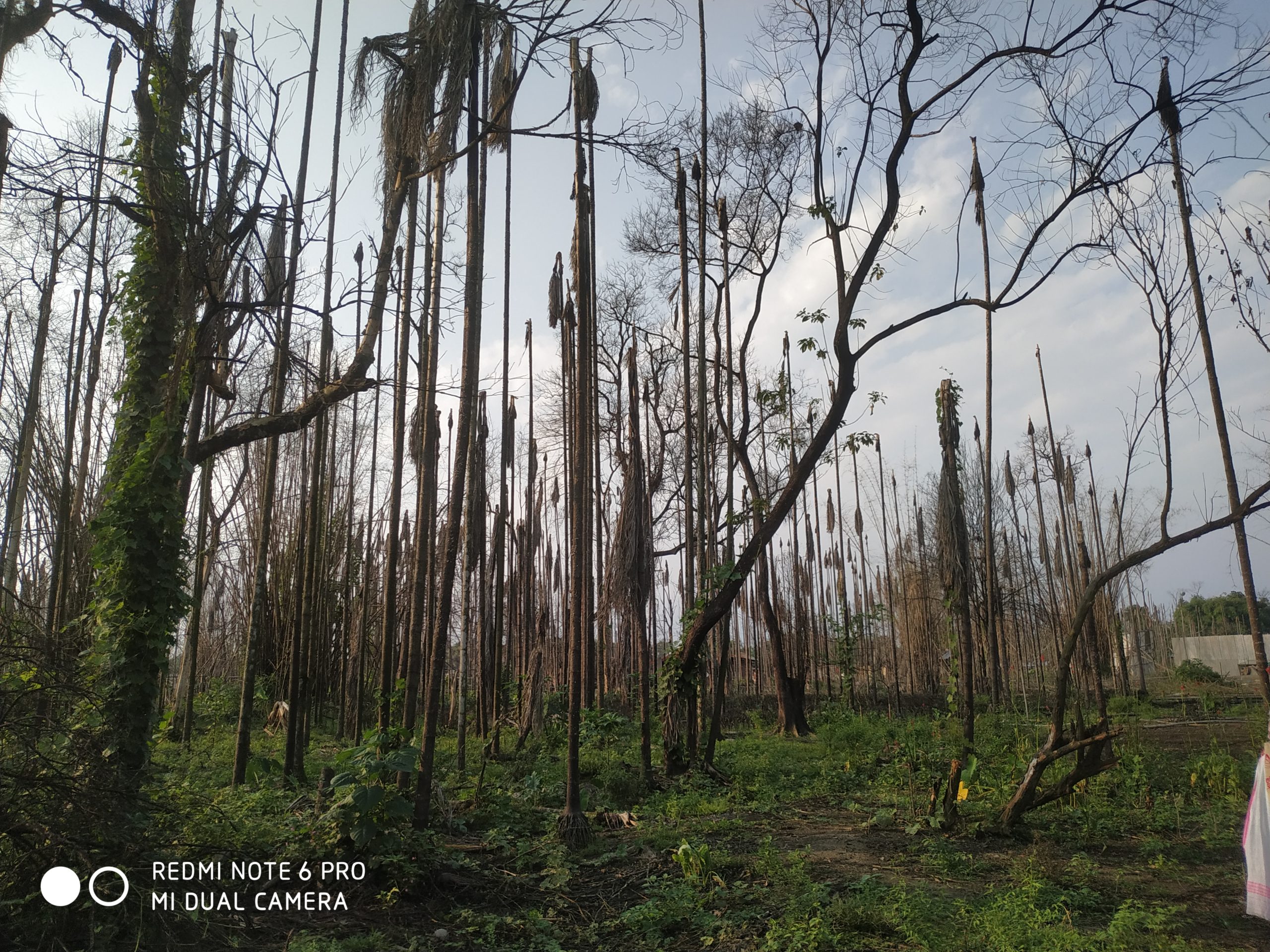
Not compensated
But local activists complained that not all those who were affected received their rightful compensation. Niranta Gohain, a resident of Natun Rangagora village, which is located two kilometres away from the site of the blowout, drew the attention of the authorities to these anomalies in October. He claimed that though the villagers had lost their agricultural land and other means of livelihood, Natun Rangagora was not included in any of the three categories of compensation.
“Many of the 70-80 families in Natun Rangagora did not get the fifty thousand monthly compensation, nor the one time compensation of thirty thousand rupees,” Gohain told Gaon Connection. He said the villagers of Natun Rangagora thrice submitted a memorandum to the district administration, about the compensation, but nothing had come of it.
“Surprisingly, fifty thousand rupees was transferred to the bank accounts of only 15-20 families of Natun Rangagora out of the nearly eighty families,” Gohain claimed and added how in the neighbouring village of Gotong, eight families received the one time Rs 30,000 compensation but not the monthly Rs 50,000 compensation for their rent, etc.

When asked, the OIL spokesperson told Gaon Connection the onus was on the district administration. “As a corporate we don’t have the competence to prepare and decide the beneficiaries. The authority to choose or decide beneficiaries lies with the government of Assam or the district administration,” he explained, adding that the district administration had the resources and expertise to do the evaluation and assessment. “If there are any anomalies highlighted by local communities, only the district administration can address it,” he stated.
Gaon Connection contacted the office of Diganta Saikia, the deputy commissioner of Tinsukia district to clarify the allegations of anomalies in compensation. An official at the district office said there were no anomalies and the compensations were given on the basis of the survey of the affected people, conducted by the district administration.
A blow to livelihood
While the fire at Baghjan-5 oil and gas rig has finally been doused after more than five months, the impacts of this disaster on the livelihoods of local people and the ecology are widespread, and expected to be felt for a long time to come.
For instance, just a kilometre away from the site of blowout, is Maguri Motapung beel, a large wetland on the floodplains of the Brahmaputra, that is crucial to the local livelihoods of farmers and fishers.
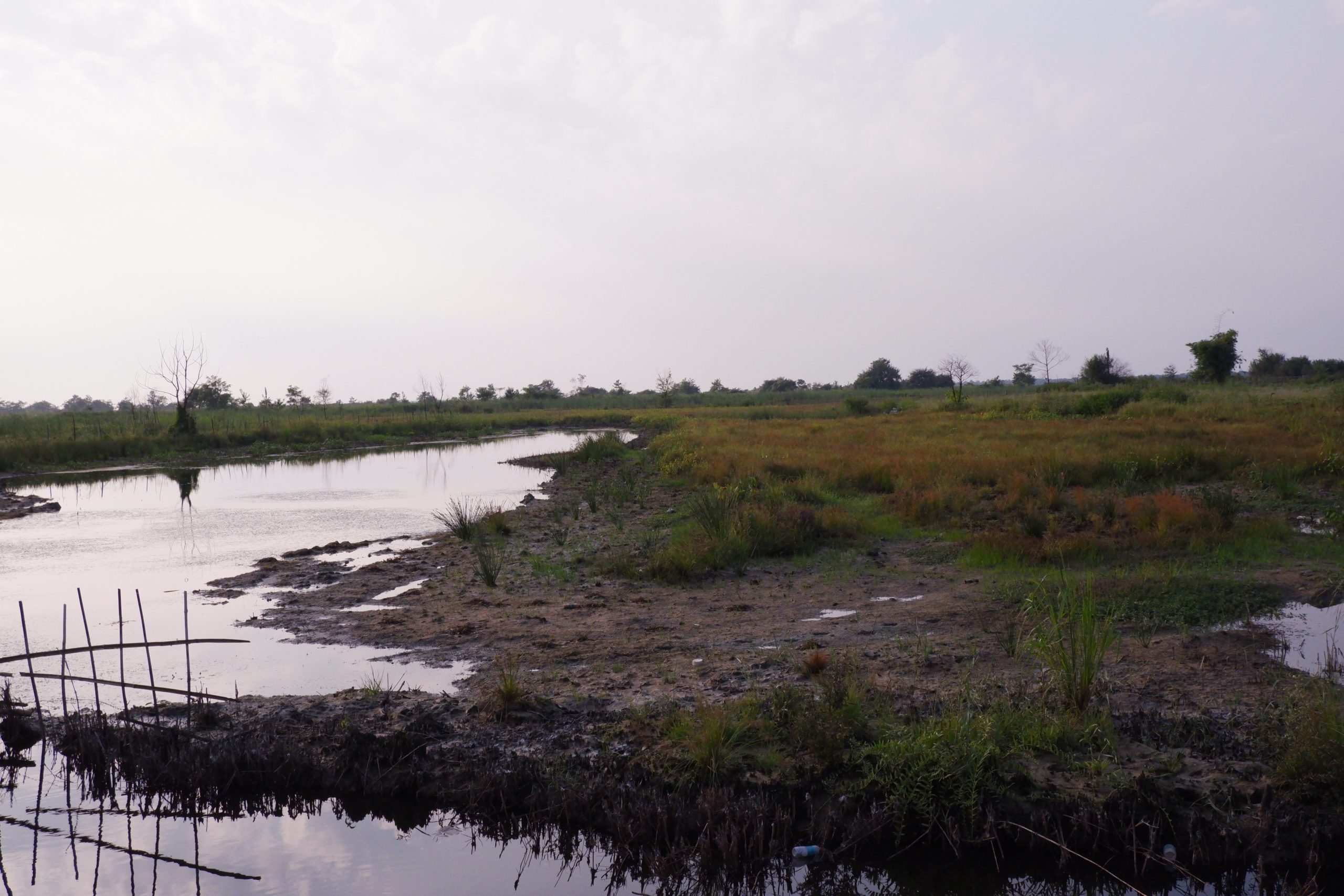
“Villagers till the saporis or low-lying flood-prone riverbanks of Magur Motapung beel, for rabi cultivation,” said Gohain adding that the oil condensate from the blowout at Baghjan well no-5, that can be toxic and harmful to the environment, animals and humans, has covered everything in the area.
While the exact data on the impact the blowout has had on the agricultural lands is yet to become clear, villagers, who mostly grow paddy and vegetables for their own consumption on small holdings, of not more than a hectare or so, say their produce was gutted or damaged.
About three kilometres away from Baghjan, at Limbuguri, villagers are staring at a grim future. Their small-scale tea cultivation is still reeling from the oil inferno. “Not just the kerosene-like stench that still pervades everything here, including the tea leaves, but the production of the leaves have gone down by forty per cent when compared to last year’s,” Devid Nag, who cultivates a bigha of tea, told Gaon Connection.
Maguri Motapung beel is home to more than 80 species of fishes and over 100 bird species including some endangered or near threatened ones. Locals fear that migratory birds that start arriving by early November will no longer return to Maguri Motapung beel. The area is also not too far from the Dibru-Saikhowa National Park, a bioreserve that is spread over 765 sq kms.

“The impact of the disaster will be long term, but things will now become much clearer as the fire is doused,” Bimal Gogoi, an environmentalist, based in Golaghat in Assam, told Gaon Connection. “There is a high chance that the pollutants will leach into the ground and the ground water and impact aquatic life,” he added.
The public relations manager of OIL, though admitting that there was some environmental damage caused, said the impact would be short-lived.
“Because of the nature of the gas and the condensate, they easily evaporate and are washed away by rains. Since the blowout, the area has witnessed many rainfalls. So, these elements will not have long-term impact either on the air or the soil,” he told Gaon Connection.
However, 45-year-old Kuntola Bora, who has lost her house, farmland and livelihood to the Baghjan disaster, begs to differ. And rightly so.

